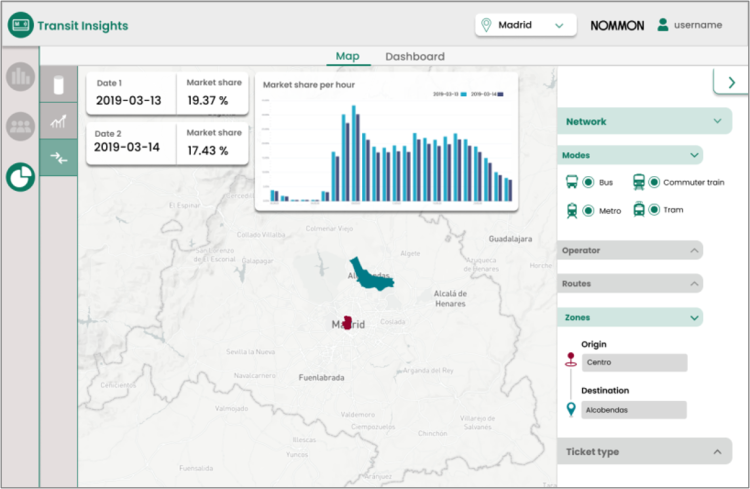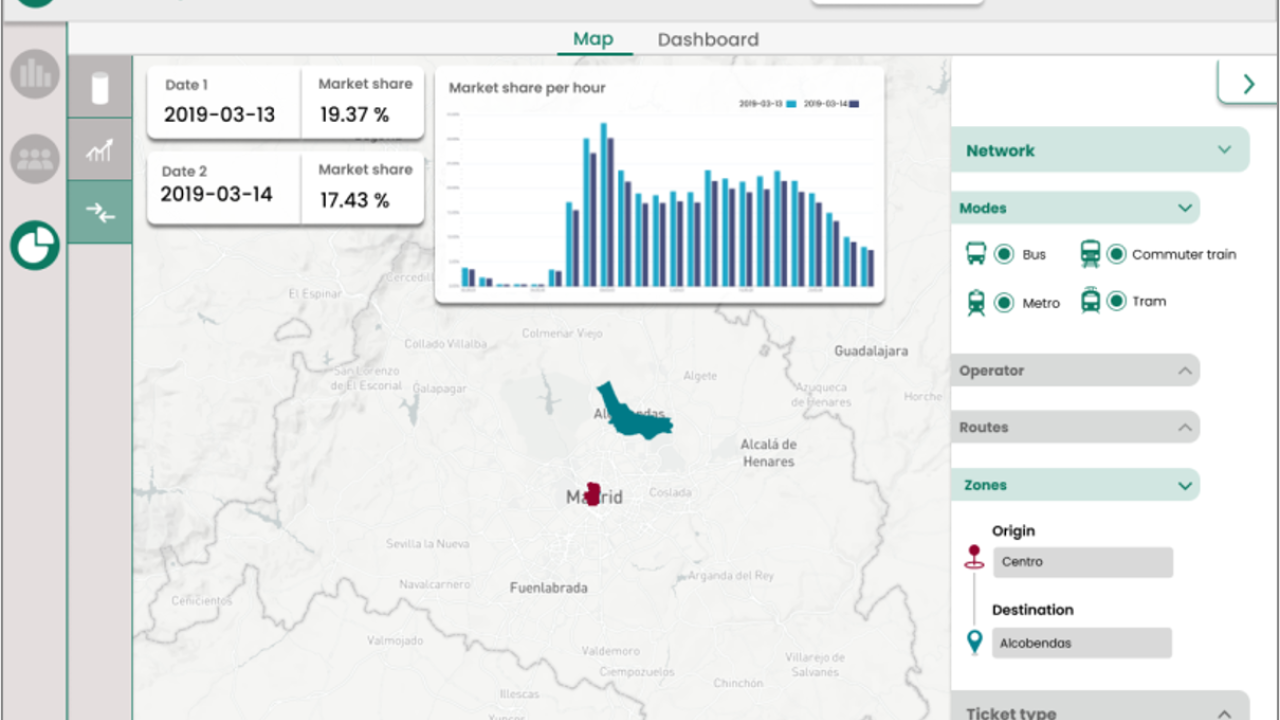Driving efficiency in Madrid’s public transport

The Challenge
In Madrid, as public transport continues to evolve, there is still a lack of understanding of the complex multimodal travel patterns involving buses, trains, and metro networks. Conventional data sources - such as surveys and manual counts - only capture snapshots, failing to reveal real-time usage trends across modes.
Madrid’s need for precise, continuous insights into urban mobility is a critical step toward reducing congestion and enhancing the efficiency of its public transport system. Transport authorities needed a solution that could track passenger flows seamlessly across various transit types to inform decisions on resource allocation, scheduling, and urban planning. With increasing demand for efficient public transit and the drive to reduce reliance on private vehicles, Madrid’s mobility management required an advanced data-driven approach to deliver reliable, sustainable transport options for millions of daily commuters.
The Solution
To tackle these challenges, Nommon developed a cutting-edge data analytics tool that uses Madrid’s intelligent payment systems - integrating contactless smart card and mobile ticketing data - to analyse commuter behaviours. The tool aggregates anonymised data from multiple transit modes, including buses, metros, and railways, to reveal multimodal travel habits, peak times, and user preferences.
By combining location-based data with intelligent payment information, Nommon’s solution provides a complete picture of transit usage patterns. The system can visualise user flows across Madrid’s network, identify areas where services are under or overutilised, and even forecast demand during different times of the day.
This data-driven approach empowers transit authorities to respond proactively, adjusting schedules, enhancing service frequency, and reallocating resources in real-time based on actual usage patterns, ultimately improving the reliability and efficiency of public transit.

Making an impact
By leveraging Transit Insights, a platform designed to process and fuse data from various sources, Nommon tackled challenges like inferring trip origins and destinations across Madrid’s extensive and complex network. With over 13,000 stops, 600 lines, and 4.5 million daily validations, the platform’s ability to adapt to diverse scenarios, such as suburban rail validations and metro transfers, proved crucial.
This analysis provided Madrid Regional Transport Authority (CRTM) with precise insights to optimise scheduling, improve service reliability, and support strategic decisions, ultimately enhancing the travel experience for millions of passengers.
The tool's emission indicators also highlighted public transport's environmental benefits, contributing to informed sustainability strategies.

Lessons learnt
This case study underscored the transformative power of integrated data systems for urban mobility:
- Monitoring of passenger demand thought data from intelligent payment systems provides, to public authorities, detailed and continuously updated information on the use of public transport. This is an essential first step towards the goal of improving service quality to attract more users.
- Effective implementation required collaboration among public transport authorities, data providers, and technology partners to balance data privacy with utility.
- Establishing robust anonymisation and security protocols was essential for maintaining public trust and ensuring compliance with data regulations.
- The success of the project highlighted the need for scalable systems capable of adapting to evolving transit demands and integrating various data sources seamlessly.
These lessons emphasised that sustainable and efficient transport solutions depend on comprehensive data analytics combined with a commitment to user-centric service enhancements.







